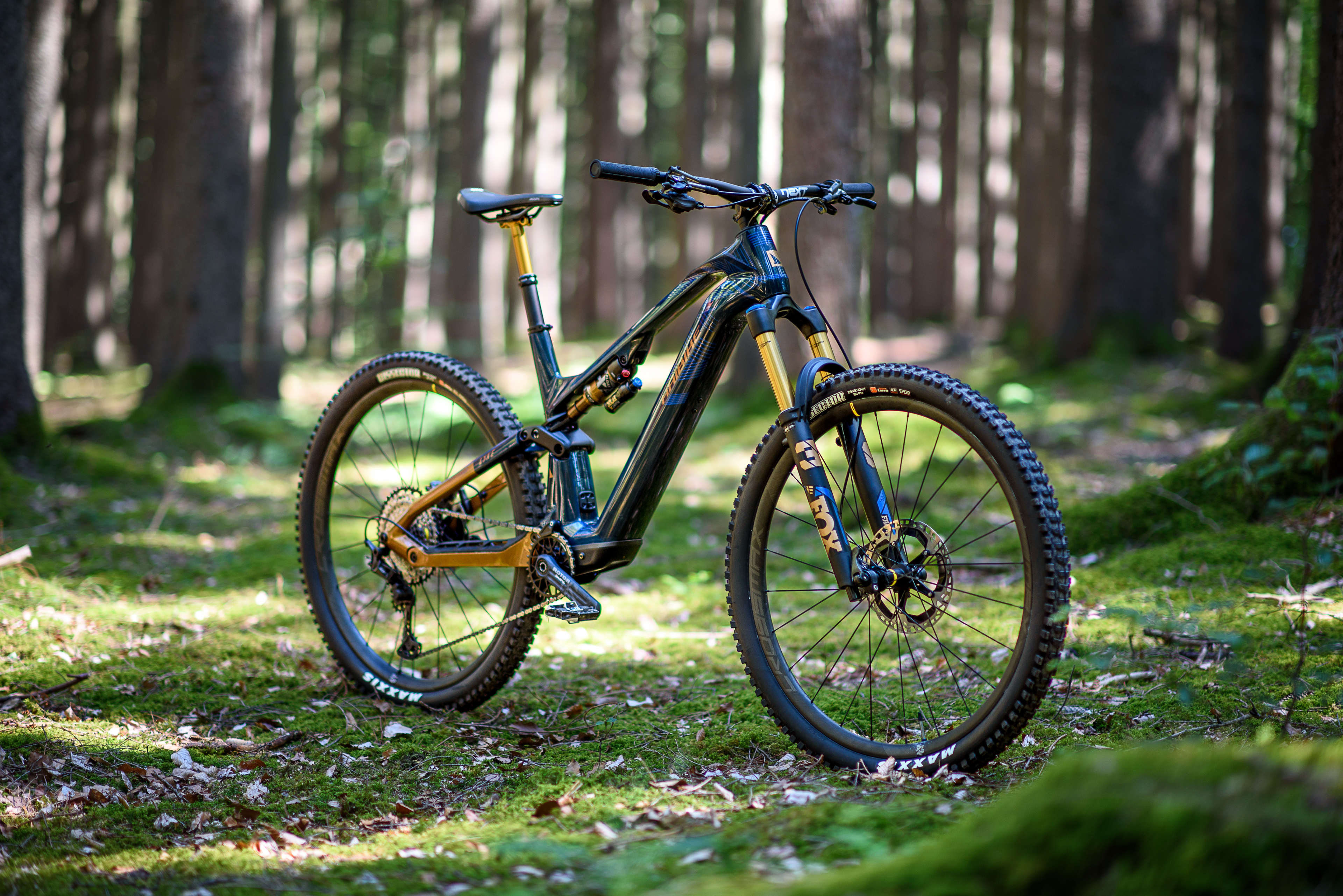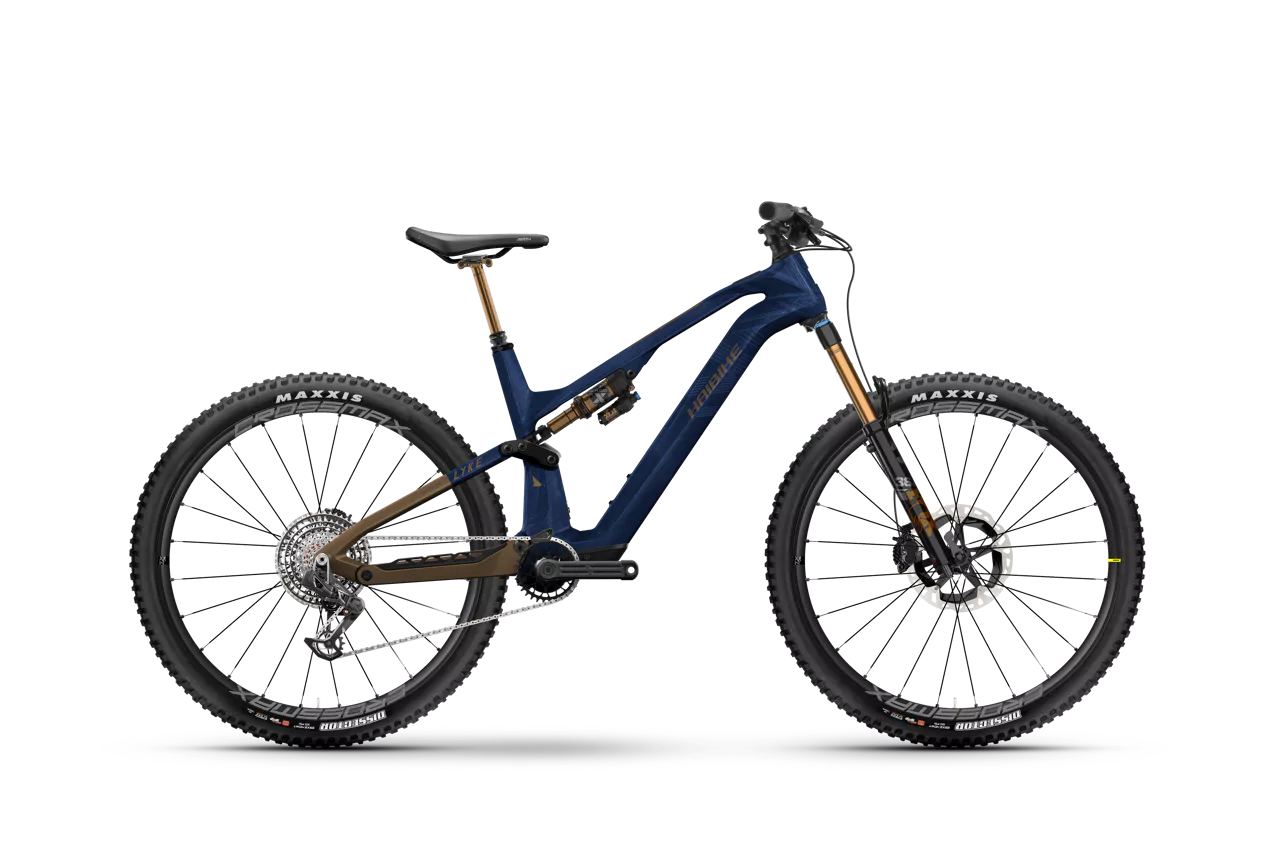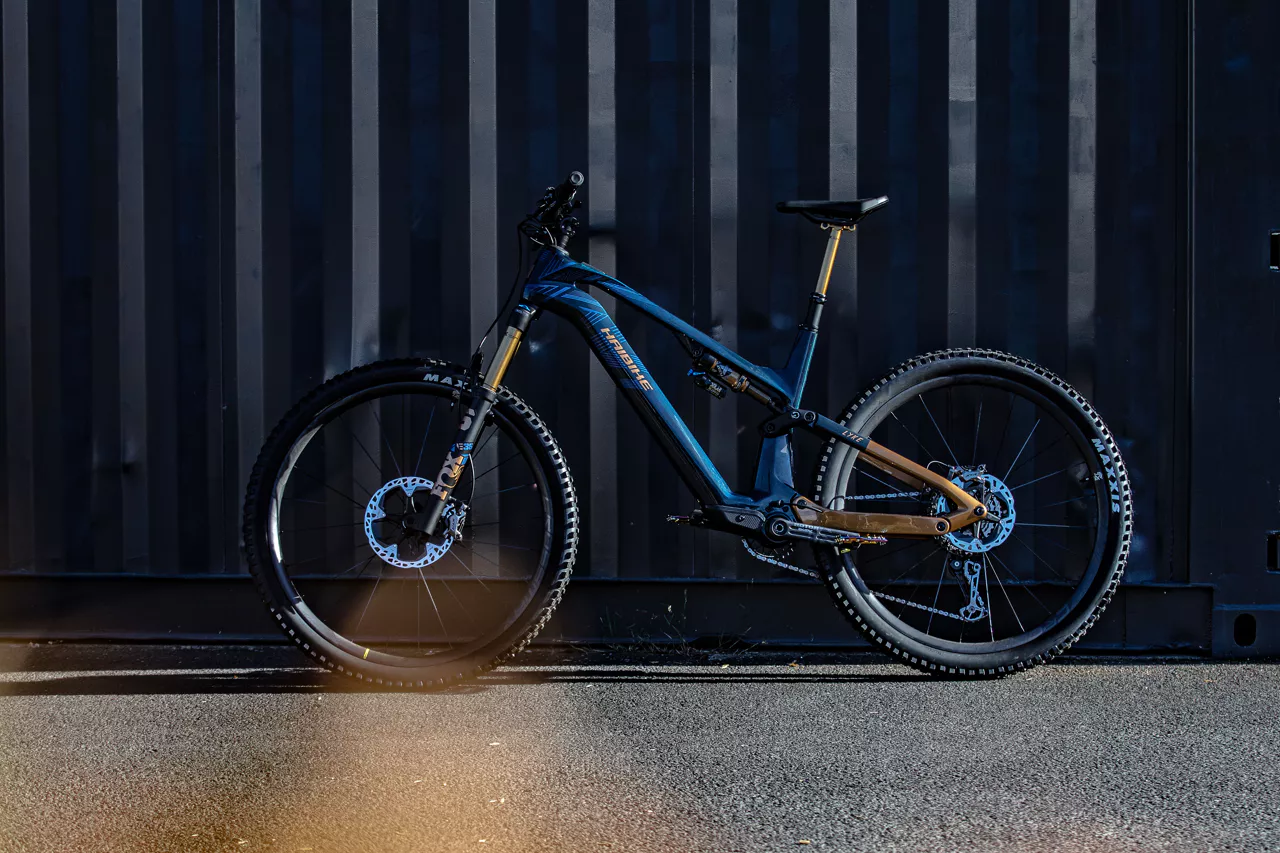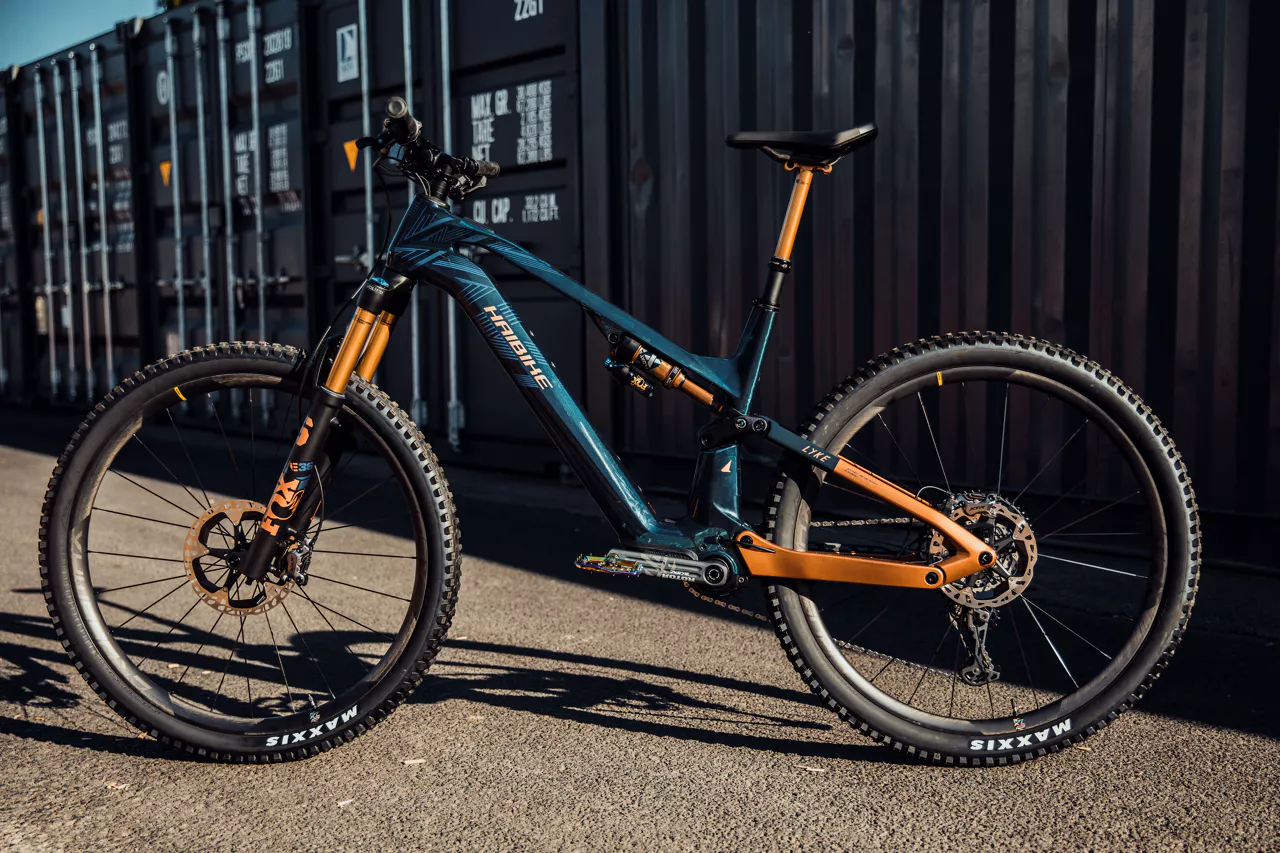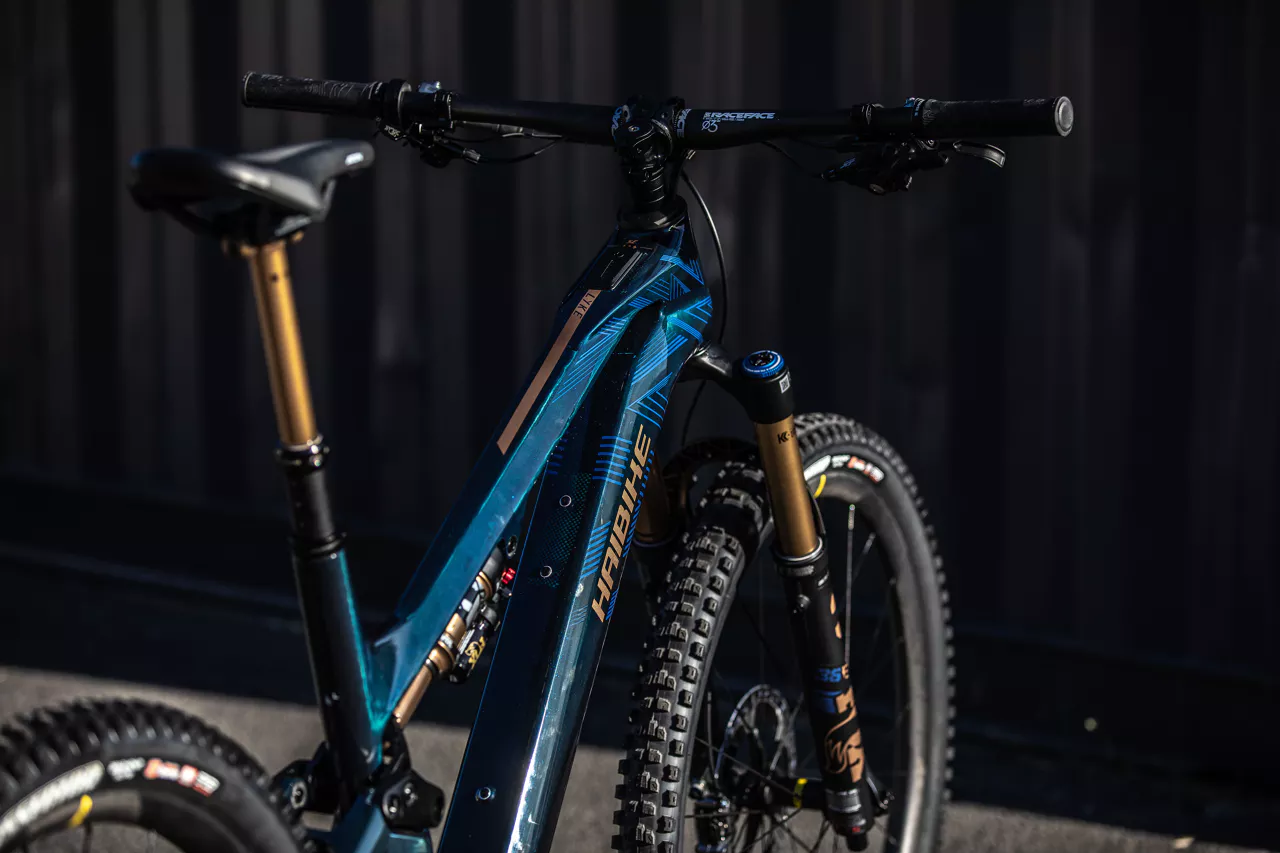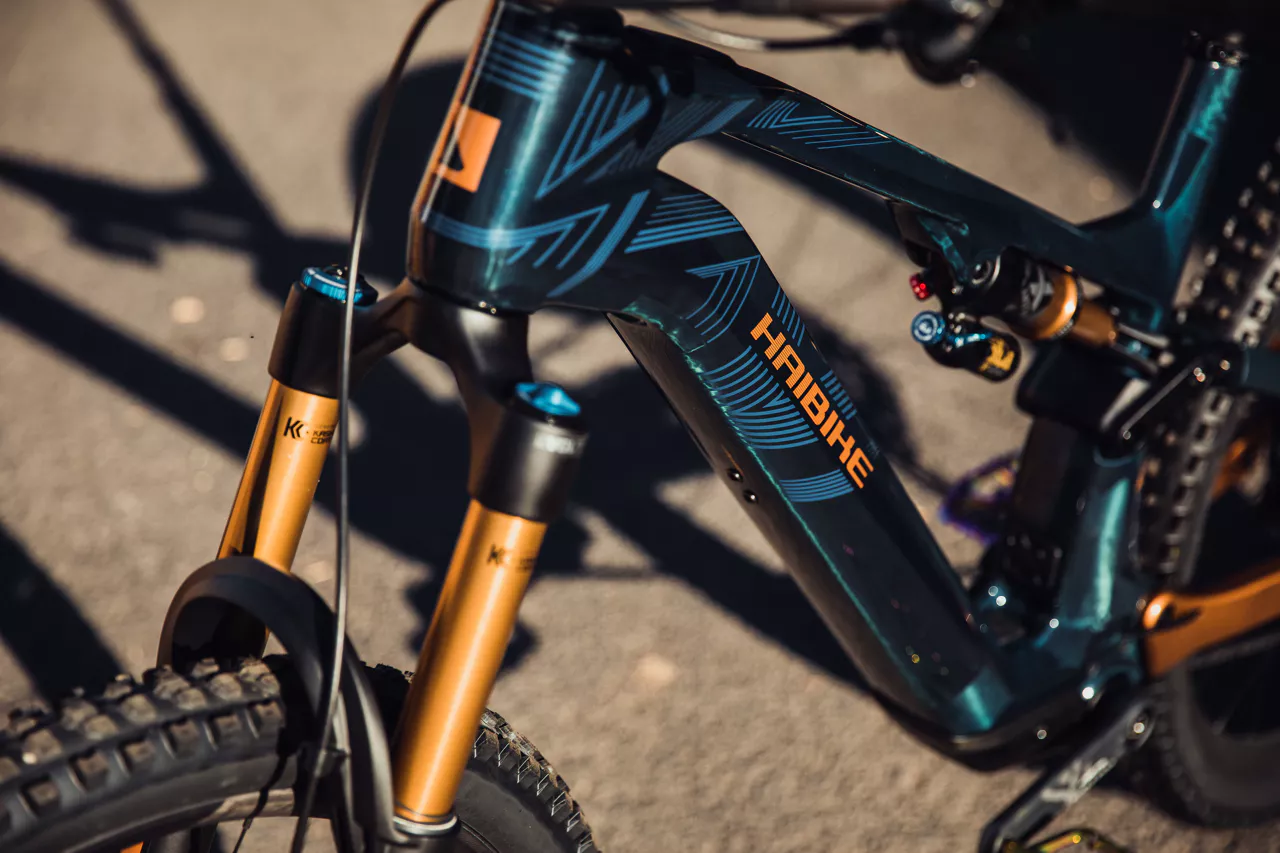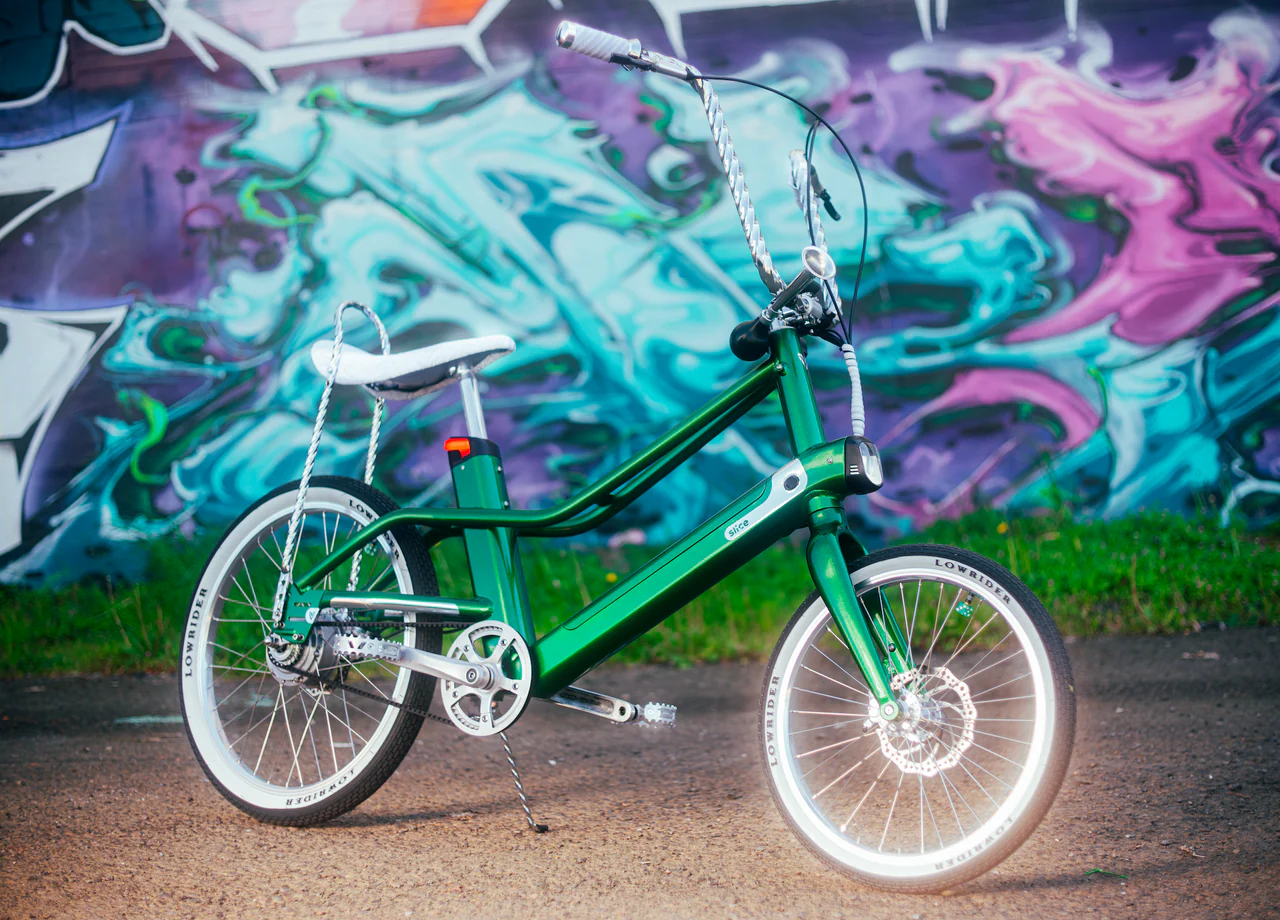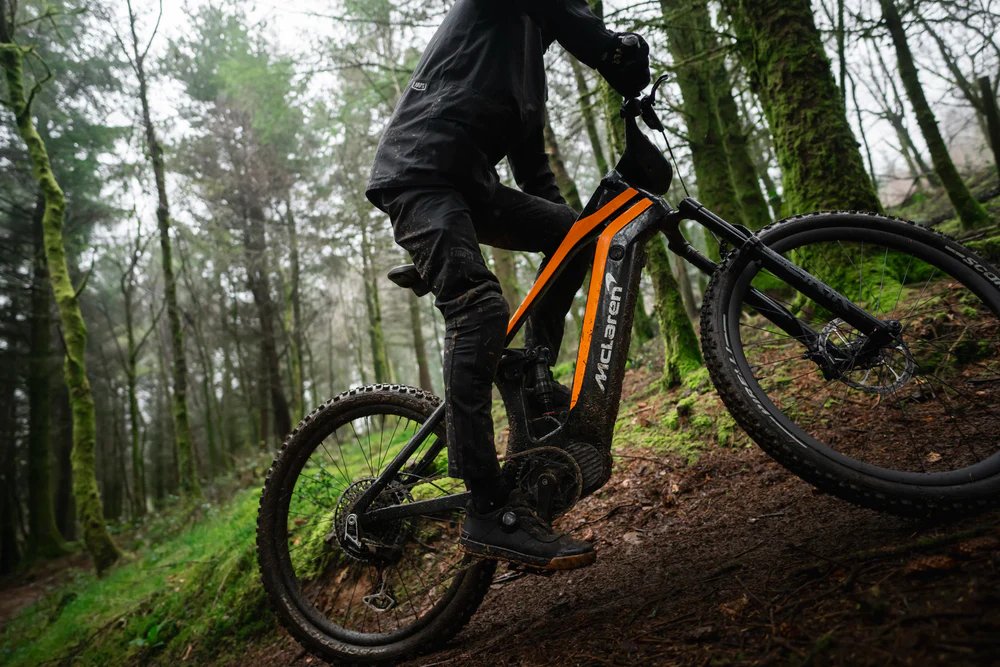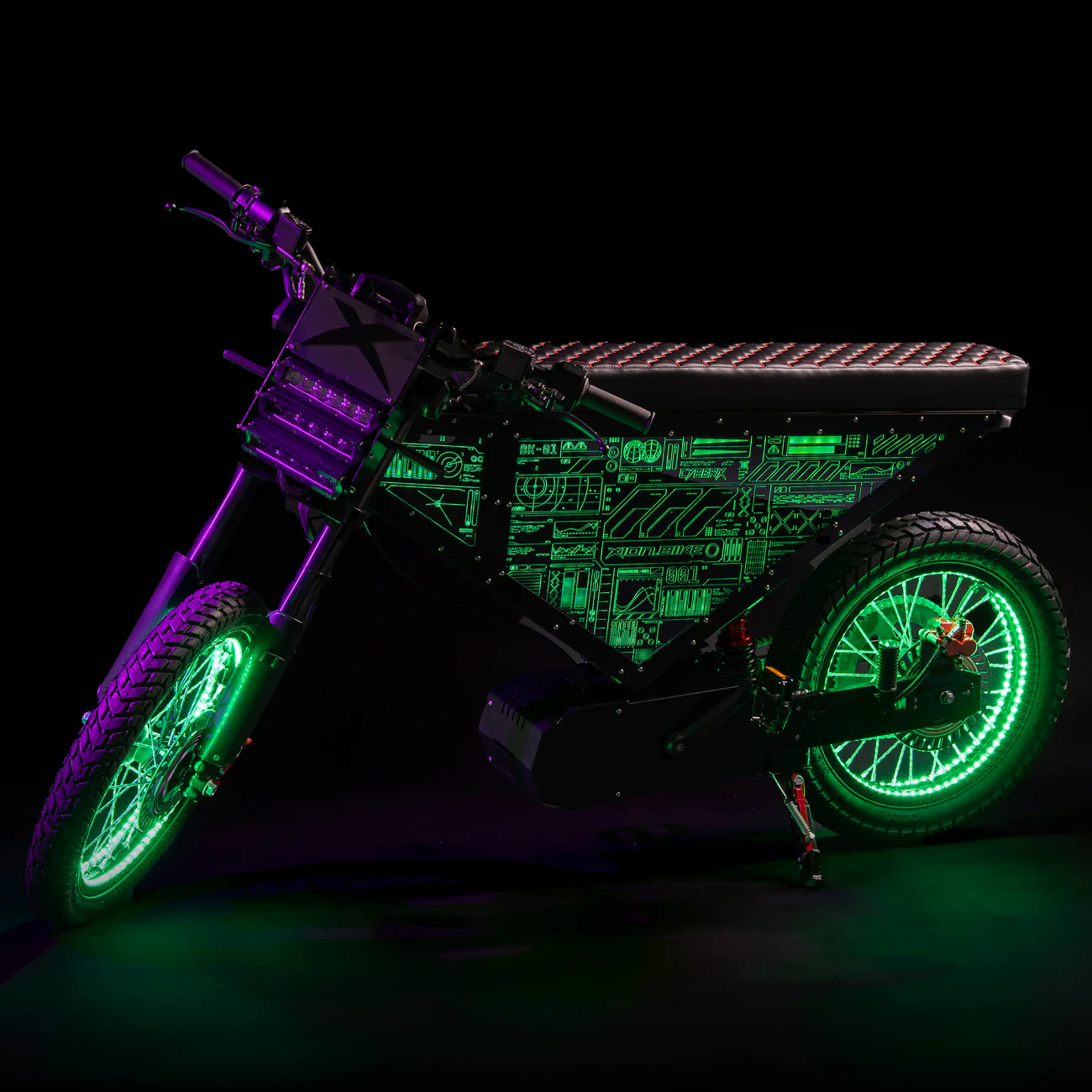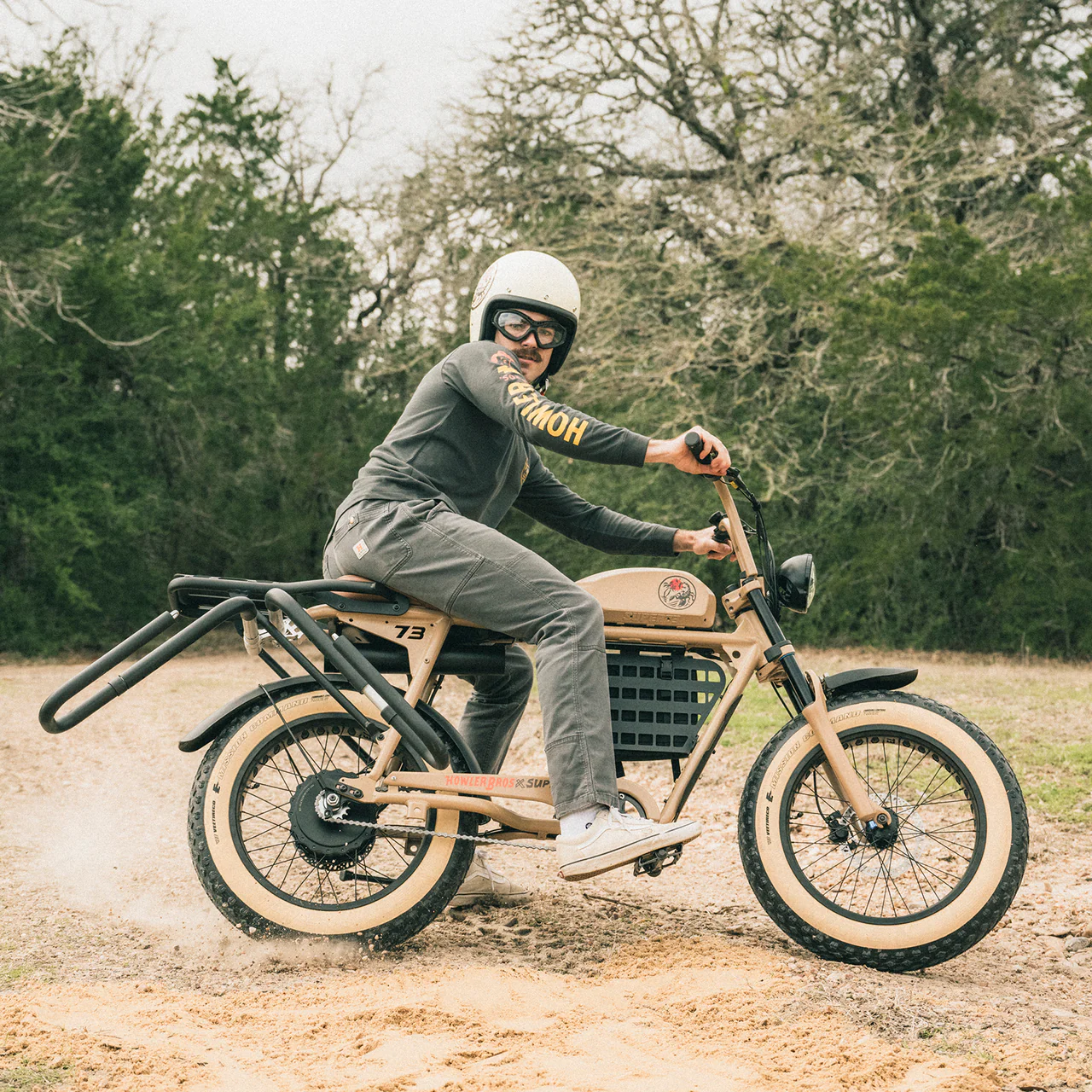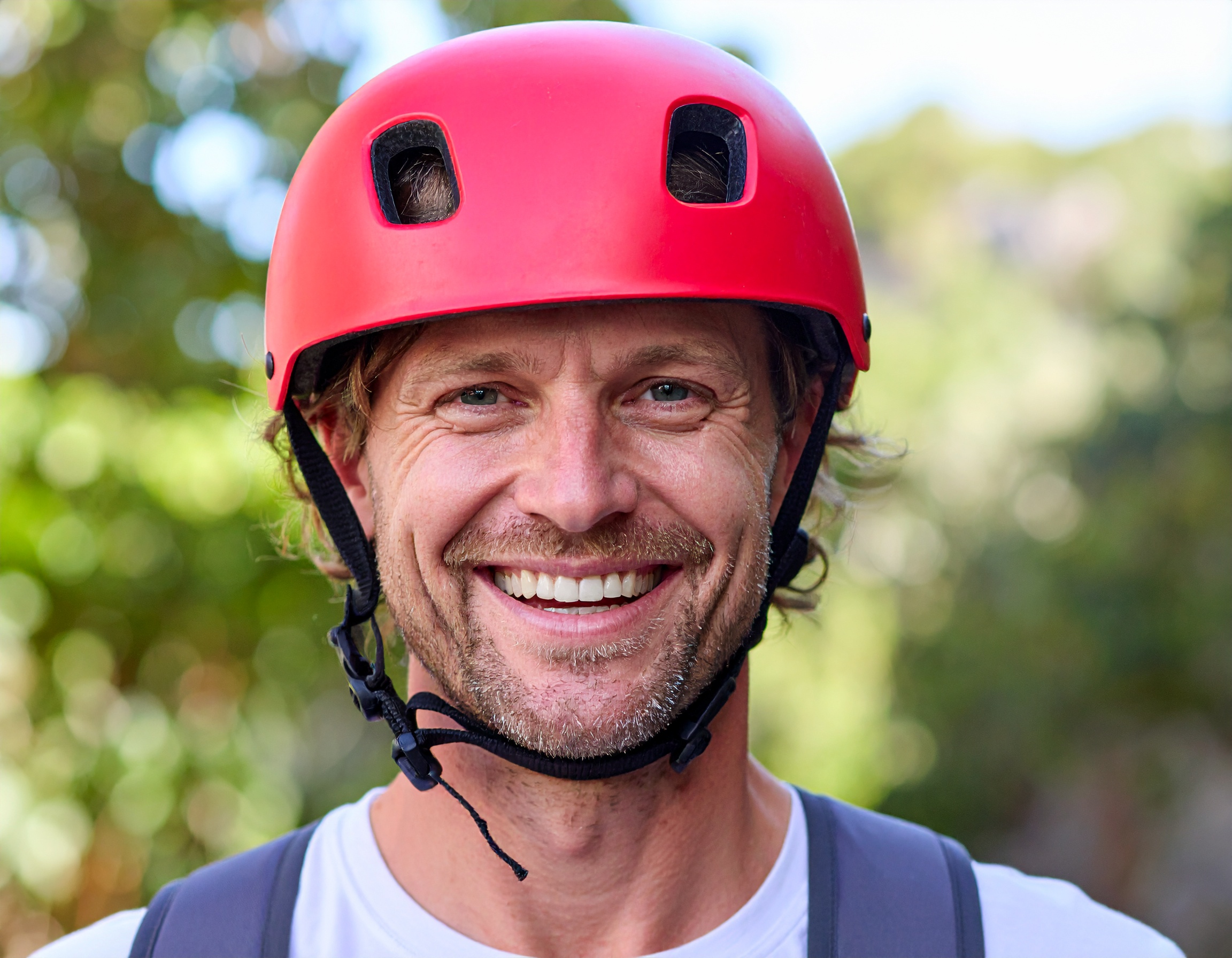
I’ll be honest: after two decades of riding mountain bikes, I’m pretty skeptical when manufacturers claim they’ve created an e-bike that “feels natural.” Most electric mountain bikes feel like riding a moped with knobby tires. But after putting serious miles on the Haibike LYKE CF SE across everything from Rocky Mountain singletrack to Pacific Northwest root gardens, this German-engineered machine actually delivers on that promise.
At 38.6 pounds with full suspension and premium components, this isn’t just another heavy e-bike with a motor bolted on. It’s what happens when you start from scratch to build an ultra-lightweight eMTB that amplifies your riding rather than replacing it.
What Makes This Motor System Different
The Fazua Advantage
Here’s where things get interesting. The Fazua Ride 60 motor is nothing like the Bosch or Shimano systems you’ve probably ridden. Instead of that immediate, aggressive power delivery that screams “I’M AN E-BIKE,” the Fazua system feels more like having really strong legs on a really good day.
The motor’s rotated design sits lower in the frame, which immediately improves the bike’s center of gravity. I noticed this within the first few pedal strokes—the bike doesn’t have that top-heavy feeling that makes most e-bikes feel sketchy on technical terrain.
Power Delivery That Actually Makes Sense: The three assist modes (Breeze, River, and Rocket—yes, really) ramp up gradually. Breeze feels like having a slight tailwind, River gives you that extra push on moderate climbs, and Rocket… well, Rocket makes you feel like you’ve been secretly training with the pros. But here’s the key: you still need to pedal. This isn’t a motorcycle.
Battery Reality Check
Let’s talk about the 430Wh battery, because this is where you might start having second thoughts. It’s smaller than what you’ll find on most e-bikes, but there’s a good reason for that—weight savings. The battery pops out of the downtube (genius for apartment living), and honestly, it’s one of the cleanest integrations I’ve seen.
Real-World Range: I’ve gotten anywhere from 25-45 miles per charge, depending on how much I’m leaning on the motor and what kind of terrain I’m hitting. Mostly riding in River mode with occasional Rocket bursts for technical sections, I’m averaging about 35 miles. That’s a solid half-day of trail riding for most people.
Charging Reality: The battery charges to 80% in about 2.5 hours, which is perfect for a lunch break if you’re doing back-to-back rides. Pro tip: if you live in an apartment like I do, being able to pop the battery out and charge it inside is a game-changer.
Why This Frame Actually Works
Carbon Done Right
Look, I’ve seen plenty of carbon e-bike frames that feel like someone just bolted a motor onto a regular mountain bike and called it good. This isn’t that. Haibike clearly started from scratch here, and it shows.
The frame is stiff where it needs to be (bottom bracket area, head tube) but has just enough give in the right places to smooth out trail chatter. After riding it back-to-back with a Specialized Levo SL, the difference in ride quality is noticeable—this thing feels more planted and confidence-inspiring.
Built for Motor Stress: The carbon layup is beefed up around the motor mount and battery housing, which is smart engineering. I’ve seen too many e-bike frames crack at stress points because manufacturers didn’t account for the extra forces. No issues here after 6 months of aggressive riding.
How It Actually Rides
The geometry hits that sweet spot between efficient climbing and confident descending. I’m 6'1" on the Large frame, and the riding position feels natural—not too aggressive, not too upright. When you’re grinding up a technical climb, you’re positioned to put power down effectively. When things get steep and sketchy going down, you can get your weight back without feeling like you’re going to go over the bars.
The 29-inch wheels help with rollover on technical terrain, which is crucial when you’re carrying extra speed thanks to the motor assist. I’ve taken this thing down stuff that would normally require way more caution on a traditional bike.
Suspension That Actually Gets E-Bikes
Fox Factory Front End
The Fox 34 Float Factory fork is spec’d specifically for this bike’s weight and riding characteristics, and it shows. This isn’t just any 140mm fork—it’s tuned for the extra weight and different weight distribution of an e-bike.
Right out of the box, the fork felt properly balanced. I did dial in some compression adjustments for my riding style (I like it a bit firmer for the chunky Utah rocks I frequent), but the baseline tune was spot-on. The Factory-level damper gives you enough adjustment range to really fine-tune the ride without getting overwhelmed by options.
Real-World Performance: On long, technical descents where I’m carrying more speed than I would on a regular bike, the fork stays composed and predictable. No weird diving or packing up—it just works.
Rear Shock That Makes Sense
The Fox Float DPS Factory shock is another component that’s actually been thought through for e-bike use. The 140mm of rear travel matches the front, and the progressive linkage keeps you from blowing through the travel even when you’re carrying extra speed into rough sections.
Balanced Feel: What I really appreciate is how well the front and rear work together. The bike doesn’t feel like it’s see-sawing or bobbing when you’re putting down power on climbs. The suspension stays active enough to maintain traction but doesn’t waste your energy (or the motor’s) with excessive movement.
I’ve had this thing fully compressed a few times on big hits, and it doesn’t pack down or feel harsh—it just soaks up the impact and gets back to work.
Components That Don’t Phone It In
SRAM XX Eagle Transmission
This is where Haibike really showed they weren’t messing around. The wireless SRAM XX Eagle Transmission is basically the Formula One of mountain bike drivetrains, and it’s perfect for an e-bike because it shifts flawlessly under power.
Why Wireless Matters: I used to be skeptical about wireless shifting—seemed like a solution to a problem that didn’t exist. But on an e-bike where you’re frequently shifting under load (especially on technical climbs where you need to maintain momentum), the ability to get clean, instant shifts without cable stretch or housing friction is a game-changer.
Gear Range Reality: The 12-speed cassette gives you everything from “spinning up steep technical sections” to “I’m going way too fast down this descent.” The ratios work perfectly with the motor assistance—you’re never hunting for the right gear.
Shimano XTR Brakes
When you’re going faster than you normally would on a traditional bike (which happens a lot with motor assist), you need brakes that can handle the extra speed and mass. The XTR setup delivers.
Stopping Power When It Counts: The 203mm front and 180mm rear rotors provide serious stopping power without that “all or nothing” feel you get with some high-end brakes. The modulation is excellent—you can scrub speed gradually or haul it down hard when things get sketchy.
Heat Management: On long descents where I’m riding the brakes more than I would on a regular bike, these never fade or feel wooden. The larger rotors do their job managing heat buildup, which is crucial when you’re carrying extra weight and speed.
Where This Bike Really Shines
Climbing Like You’ve Never Climbed Before
I’ve taken this bike on climbs that would have me walking sections on my regular trail bike. The combination of the Fazua motor and that wireless shifting means you can attack technical climbs with a completely different strategy.
The Technical Stuff: On steep, rocky climbs where momentum is everything, being able to shift instantly without backing off the power is huge. I’ve cleaned sections that used to shut me down because I could maintain motor assist while adjusting gears for the terrain.
Reality Check: This isn’t a motorcycle—you still need to be fit and skilled. But it opens up terrain that was previously out of reach or just too painful to be fun.
Descending With Confidence
The extra speed you carry into descents thanks to motor assist could be sketchy with lesser components, but everything on this bike is up to the task. The suspension keeps you planted, the brakes keep you in control, and the geometry keeps you confident.
The Weight Game
At 38.6 pounds, this thing is genuinely light for a full-suspension e-bike. For context, most e-MTBs I’ve ridden are pushing 50+ pounds. The difference is immediately noticeable when you’re maneuvering the bike on tight switchbacks or trying to hop over logs.
Handling Reality: It still feels like a mountain bike, not like you’re wrestling a small motorcycle. The weight distribution is balanced enough that you can actually manual the thing, hop it around, and generally ride it like you would any other trail bike—just with superpowers.
How It Stacks Up Against the Competition
The Lightweight E-MTB Battle
This bike is playing in the same sandbox as the Specialized Levo SL and Orbea Rise—the “lightweight e-bike that doesn’t suck to ride” category. Having spent time on all three, here’s the honest comparison:
vs. Specialized Levo SL: The Levo SL is more approachable (and cheaper), but this Haibike feels more premium. The component spec is higher, and the Fazua motor feels more natural than Specialized’s system. The trade-off? The Levo has slightly better range.
vs. Orbea Rise: The Rise is a great bike with more size options, but the Haibike’s component integration is cleaner. Both use excellent motor systems, but the Fazua feels slightly more refined in its power delivery.
Why Choose This One: If you want the most premium components and the most natural-feeling motor system, and you’re willing to pay for it, this is your bike. If budget is a bigger concern, the other options make more sense.
Let’s Talk Money
At around $13,500 USD, this isn’t a casual purchase. It’s expensive, full stop. But let’s break down what you’re getting:
Component Math: The SRAM XX Eagle Transmission alone is a $2,000+ component group. Add in the Fox Factory suspension (front and rear), XTR brakes, and carbon frame with integrated motor system, and you’re looking at serious value from a pure parts perspective.
The Reality: This is a bike for people who already know they want a premium e-MTB and are choosing between the best options available. If you’re cross-shopping against $6,000 bikes, this probably isn’t for you.
Who Should Buy This Bike
Perfect For
This bike is ideal for experienced mountain bikers who want to extend their riding capabilities without sacrificing the feel of traditional mountain biking. You probably already own a high-end trail bike and understand the value of premium components.
The Sweet Spot: If you’re getting older but don’t want to give up technical terrain, if you want to ride with faster/younger friends, or if you want to access backcountry that requires significant climbing, this bike opens up possibilities.
Technical Riders: The bike’s capabilities really shine when you have the skills to use them. If you’re comfortable on advanced terrain, this bike will take you to the next level.
Riding Scenarios Where It Excels
Epic All-Day Adventures: The motor assistance means you can tackle longer, more ambitious rides without dying on the climbs. I’ve done 40-mile days with 5,000+ feet of climbing that would have been brutal suffering on a regular bike.
Technical Climbing: If you love technical terrain but hate the fitness requirements, this is your solution. The bike makes challenging climbs accessible while keeping the fun factor high.
The Long-Term Reality
Service and Support
Here’s the thing about the Fazua system: it’s less common than Bosch or Shimano, which means fewer shops can service it. I’ve had good luck with the system reliability (zero issues in 6 months), but you’ll want to make sure you have a dealer nearby who knows Fazua before you buy.
Warranty Reality: Two years on the frame, one year on electrical components. Pretty standard, but given the premium price, I’d like to see longer coverage. The good news is that most issues show up early if they’re going to show up at all.
Parts and Upgrade Path: The beautiful thing about the premium component spec is that everything is standard high-end mountain bike parts (except the motor and frame). Need a new derailleur? Any SRAM dealer can help. Suspension service? Any Fox dealer can handle it.
Future-Proofing
E-bike technology moves fast, but this bike’s premium components and proven motor system should keep it relevant for years. The wireless shifting and Factory suspension aren’t going to feel outdated anytime soon.
The Bottom Line
After six months and hundreds of miles on this bike, I can honestly say it’s changed how I think about e-bikes. This isn’t a replacement for traditional mountain biking—it’s an enhancement that opens up new possibilities while preserving what makes mountain biking great.
Buy This If: You’re an experienced rider who wants to extend your capabilities, you appreciate premium components, and you have the budget for a top-tier e-bike. You want something that feels like a mountain bike with superpowers, not like a different sport entirely.
Look Elsewhere If: You need maximum range, want the most bang for your buck, or don’t have access to Fazua-knowledgeable service. The Specialized Levo SL or Orbea Rise might make more sense.
Final Verdict: The Haibike LYKE CF SE is the most natural-feeling e-MTB I’ve ridden. It’s expensive, but if you’re already committed to premium e-bike ownership, this is where the technology currently peaks. It’s not perfect, but it’s the closest thing to “traditional mountain bike with magical assistance” that I’ve experienced.
Available Now
Specifications
Pros
- + Ultralight carbon construction delivers exceptional power-to-weight ratio
- + Fazua Ride 60 motor provides natural pedaling feel with seamless integration
- + Removable 430Wh battery enables convenient charging and security
- + Fox Factory suspension front and rear handles aggressive trail demands
- + SRAM XX Eagle Transmission wireless shifting precision under full power
- + Shimano XTR braking system provides consistent modulation and stopping power
- + 29-inch wheels optimize rollover efficiency and trail confidence
- + 140mm travel front and rear balances climbing efficiency with descending capability
- + Integrated cable routing maintains clean aesthetic and protects components
- + Premium component specification justifies positioning in ultra-lightweight category
Cons
- - Limited 430Wh battery capacity restricts range for all-day adventures
- - 25 km/h speed limitation may feel restrictive for experienced riders
- - Fazua system requires specific dealer knowledge for service
- - Carbon frame repair complexity increases maintenance costs
- - Removable battery adds security concerns in public areas
- - Complex suspension setup may intimidate less technical riders


